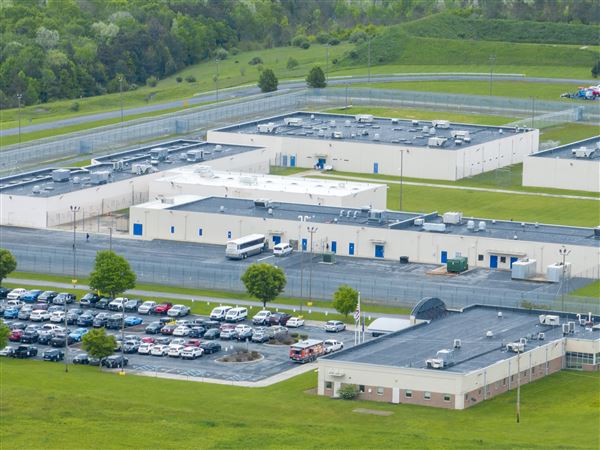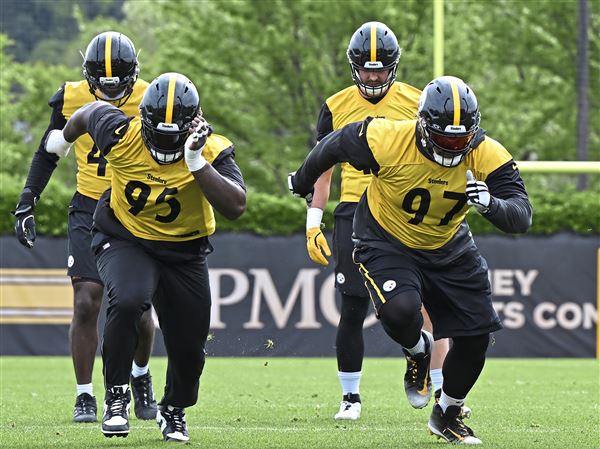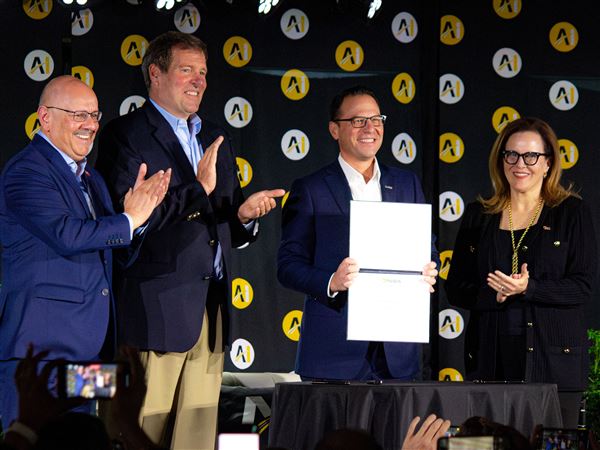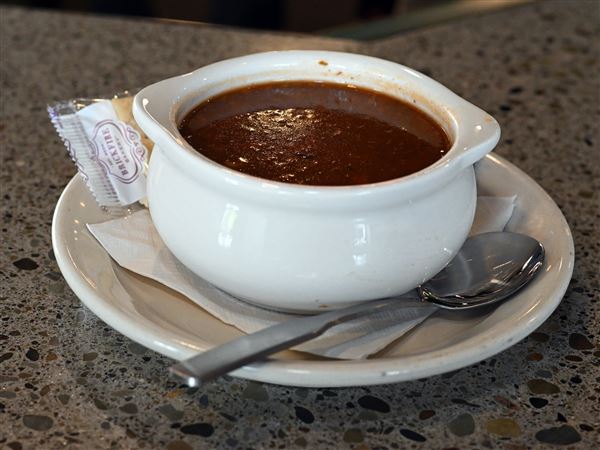On Saturday, the first weekend of spring, families came from miles around to share a warm breakfast topped with Pennsylvania maple syrup and learn the history of syrup and how it is made.
Three generations of the Gordon family were among those gathered for Maple Madness at Beechwood Farms Nature Reserve in Fox Chapel. They ate pancakes, sausages and fruit served by some of the 35 volunteers and employees who helped to organize the annual event.
Grandparents Albert and Joanne Gordon came from Moon to spend the day with their son and daughter-in-law, Adam Gordon and Molly Conroy-Gordon, of Fox Chapel.
The elder Gordons for years have supported the Audubon Society of Western Pennsylvania, which runs the nature reserve on Dorseyville Road. The younger couple brought 3-year-old daughter Lilly and 18-month-old twins, Martha and Neil, for their first visits. "It's just about time to get outdoors with the kids," Mrs. Conroy-Gordon said.
The brunch was in preparation for an easy hike through the woods behind the center with stops at five stations to learn where maple syrup comes from, how American Indians discovered it, how they taught European immigrants to enjoy it and the ways their descendants refined maple sugar into the golden syrup poured over pancakes today.
Volunteer Herb Ferguson of Allison Park led about a dozen families along a rolling path past birdhouses, a pond and the geese who live there.
"I'm an outdoors guy," said Mr. Ferguson, retired from his job as director of media medicine at the University of Pittsburgh Medical Center. Although Beechwood is a 150-acre haven for nature with five miles of trails through the woods, the maple trek covers less than a mile.
Mindy McClister of Kittanning led 2-year-old Alexander on his first visit to Maple Madness. She and her husband, Chase, have been society members for years and decided the sunny, brisk morning was the perfect time to put 7-month-old Colin in a pack on his father's back and take Alexander and his 9-year-old brother Jacob maple tapping.
Along the way to the first station, Mr. Ferguson showed his group the hollowed-out hole in a tree trunk where a woodpecker lives. Once there, volunteer Joyce Rabinovitz of Allison Park showed the children and their parents how to identify trees, such as the silver maples that grow wild at the reserve and produce the sap that makes good maple syrup. "It takes 40 gallons of sap to make one gallon of syrup," she explained. "That's why it is so expensive."
Sap runs for only a few weeks at the end of winter, she said, when temperatures go above freezing during the day. The only places in the world where maple syrup is produced are the eastern United States and Ontario.
At the second station, Gabby Hughes, a reserve instructor for 12 years, was dressed in the traditional garb of an early Native American woman to talk about the "accident" that resulted in the discovery of maple syrup.
The legend, she told the families gathered around her wood fire, is that an Algonquin brave returned from hunting and stuck the stone head of his hatchet into the trunk of a maple tree. His wife's birch bark water bucket sat at the base of the tree, and when she went to fetch it, she thought the sap that had gathered in it was water. She cooked her family's dinner with the "water" and when the family ate it, they had, "The most delicious meal they had ever tasted."
After that, the tribe deliberately tapped the trees to make a crystallized maple sugar they called sinzibukwud, a solid that was easier to carry than a container of syrup. Later, the Indians showed Europeans immigrants how to make sinzibukwud.
Ms. Hughes demonstrated how pioneer youngsters would help their mothers make maple sugar and she had the children use deer antlers to pick up hot rocks and place them in a wooden trough, where they would boil the water off the syrup to crystallize the sugar.
Pioneers refined the process of tapping the trees by using a metal hand drill, thus preserving the maples.
Paul Schmitt, who manned the third station, encouraged the children to try carrying a wooden yoke across their shoulders with two buckets suspended from either end, the same device pioneer children used.
Glenn Davis of Apollo welcomed the guests to his "sugar bush," where he showed the modern method of gathering sap. Galvanized buckets of the past have been replaced by plastic bags and nylon tubing to gather sap for syrup, he explained. The blue tubing is used to keep dirt and bacteria out of the sap, he said, and modern farmers use special spiles to tap only those maples that are at least 10 inches in diameter to prevent injuring the trees.
"It's just fun," said Mr. Davis, who has been volunteering at Beechwood for 11 1/2 years. "It's enjoyable to share your knowledge with the younger generation."
At the final station, Beechwood naturalist Scott Detwiler operated the evaporator that, for modern sugar maple farmers, turns the sap into syrup. He said the sap is 90 percent water, and without boiling it, the children would end up with "wet pancakes."
To get rid of the bugs, bark and ashes that used to be part of the syrup, farmers now pour hot syrup through screens and strainers before bottling and sealing. Modern syrup, he said, is graded by color, and each shade has a stronger maple taste. Beechwood's own grade B syrup is made just for show, he said. The maple syrup that participants ate on their pancakes is made in Somerset County.
Upon returning to the farmhouse and shops, children were invited to make maple lip balm.
The nature reserve opened in the 1970s and hosts indoor and outdoor educational events all year. It is owned by the Audubon Society and is sister to Todd Nature Reserve off exit 17 of Route 28 in Sarver.
"It's very interesting, especially for kids, to see there's something like this in their own backyards," said Rachel Handel, director of communications. "It really opens their eyes to the magic of nature."
First Published: March 31, 2011, 1:45 p.m.















